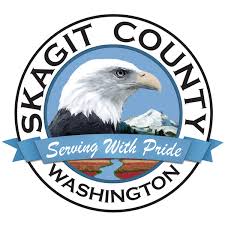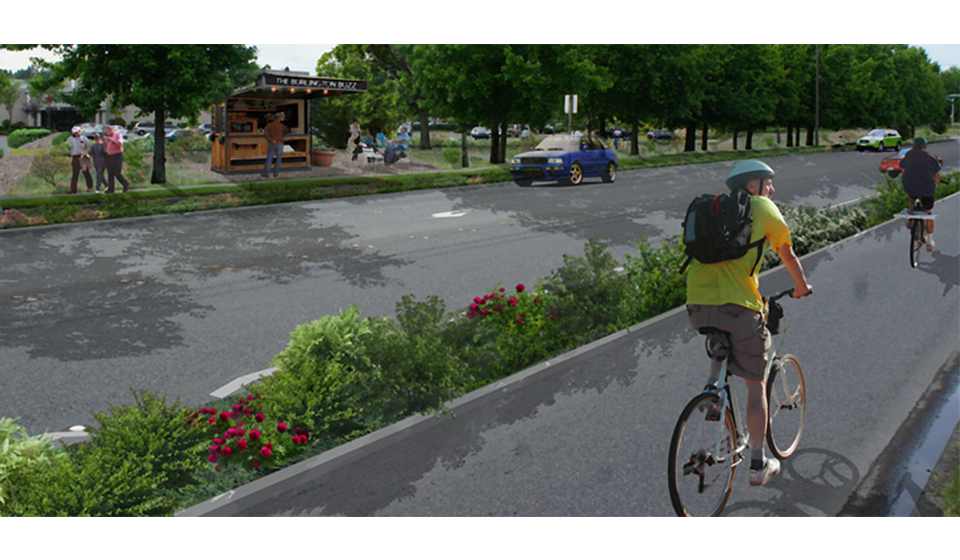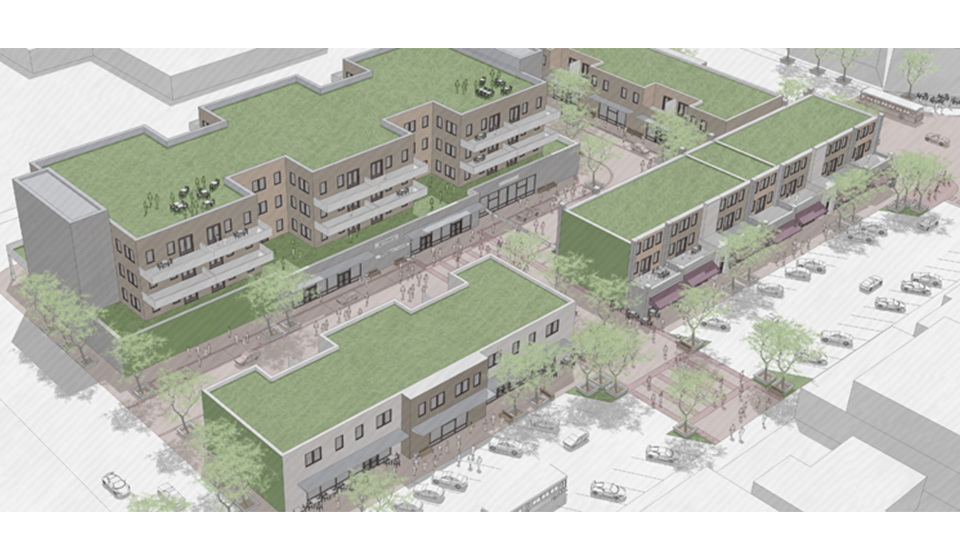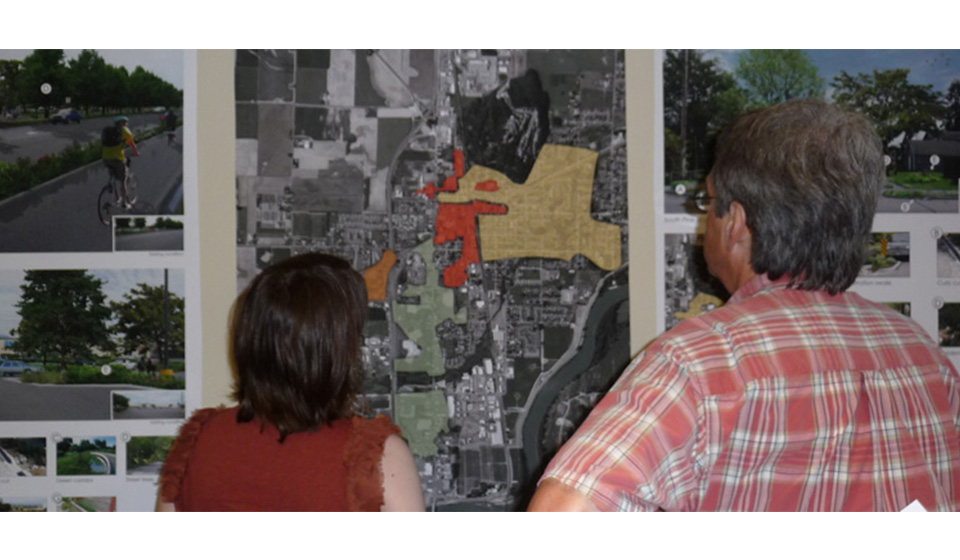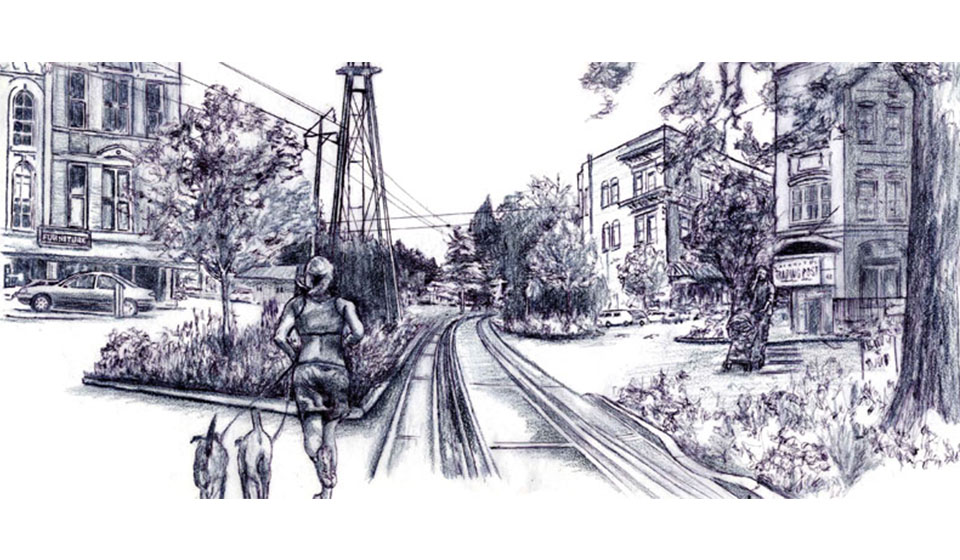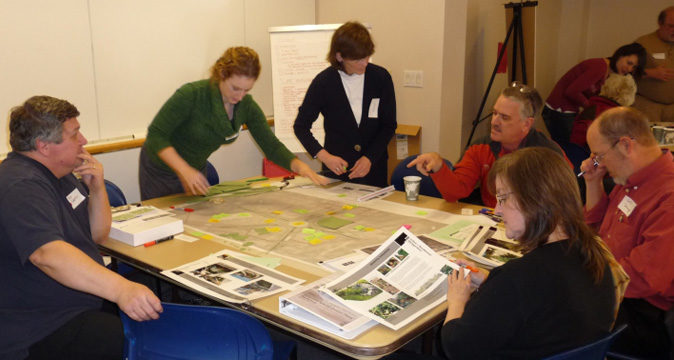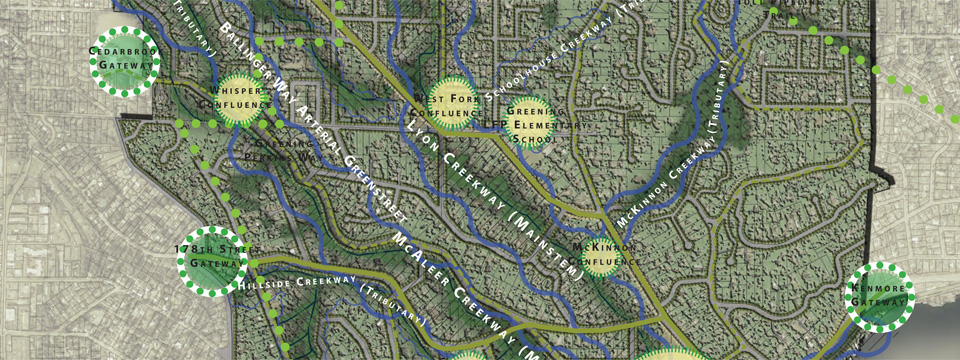July 25, 2019
Burlington at the Crossroads
In 2013, Burlington, WA—a small agricultural city located in the Skagit Valley north of Seattle—engaged an interdisciplinary team of graduate students and a faculty advisor from the University of Washington Green Futures Lab (GFL) to generate ideas for a Comprehensive Plan update. City planners and the GFL convened numerous public workshops, forums, and presentations to identify a cohesive set of values, goals, and strategies that guided the formation of the Burlington at the Crossroads (BATC) plan.
The BATC plan integrates water quality improvements with the redevelopment of the city’s historic downtown and commercial shopping centers, using commercial revenues to support civic investments and leveraging green infrastructure as a tool to enhance livability, ecological quality and connections within the city and region. Enhancing Gages Slough—a central city feature currently plagued by poor water quality— through new trail systems, riparian restoration, and green stormwater infrastructure is also considered key to encouraging a vibrant, walkable community and attracting new residents, visitors, and economic investments to the city. In the downtown district, a denser mixed-use infill development is proposed at the main entry to inspire a lively pedestrian-oriented main street culminating in a renovated public park. The park is designed as a major public gathering space for activities and civic events such as farmers markets and festivals, and features multiple green stormwater demonstration projects.
The effects of the BATC recommendations have already had a broad impact: the plan will serve as the guiding vision for the City’s Comprehensive Plan update; a grant will fund events for the historic town center such as wine and microbrew tasting, outdoor movies, and live music; and local businesses are proposing to showcase Skagit Valley produce. Due to the extensive public engagement process, Burlington’s civic and citizen leaders have already begun implementing the recommendations through demonstration projects and community activities even before they are adopted as code.
[quote style=”default”]The UW Green Futures Lab initiated an innovative community involvement process, listened to the citizens and businesses, put together exhibits illustrating alternatives, and facilitated setting a new vision in motion for the 2014-2015 Comprehensive Plan update. The Downtown Futures Task Force and the Burlington Community Task Force are already taking action looking at Complete Streets, a Downtown Historic District, and a range of improvements to [Burlington].
– Margaret Fleek, Planning Director for the City of Burlington[/quote]
Partners + Funders

